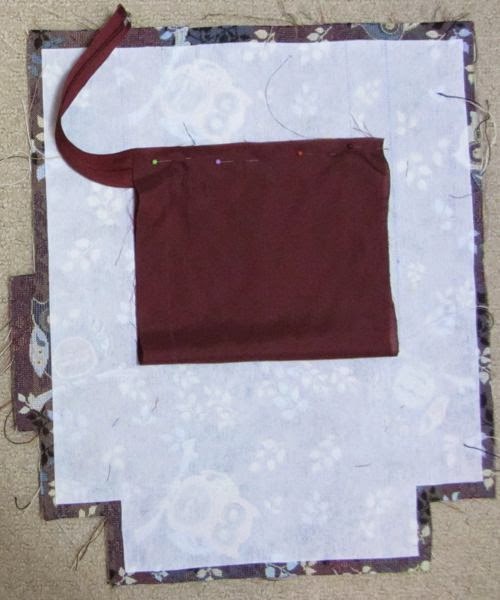While I agonize about what to do with the front edges of the cardigan, I've started one pair of the sort of socks I've been meaning to get to before winter's over.
These are dark brown Sandnes Garn Perfect wool/nylon at around 6 stitches to the inch, so a medium weight for a sock in my opinion (though I have to say, it seems relatively difficult to find sock yarns in sport weight or thicker).
The stitch pattern will come from Gemma in Anna Zilboorg's Socks for Sandals and Clogs, but the overall structure and method will be based on Cat Bordhi's New Pathways for Sock Knitters, my favorite sock knitting book. These are cast right on, with no grafting and no ridge in the toe. I do find her socks default to having rather high arches compared to most, but she gives instructions for customizing that, along with many other things. To summarize my attitude about the book: it's a bit different from common sock knitting methods, so it isn't the easiest way to familiarize yourself with those in order to use other people's patterns and know instantly what you're looking at... but having done both, I find myself reworking other patterns to function more like Bordhi's. (Zilboorg's are a whole other story — they have features, like removable soles, that I haven't dared try yet.)
2014-12-23
2014-12-22
Progress on leftover project 2 of 3
I have only been able to work on some things off and on, but I have sewn together this cardigan I knitted from Lion Brand Homespun. It isn't my favorite yarn to knit or to wear, but aside from the washability and the price, I couldn't resist this particular color. It's a far subtler tan, yellow, and steel-blue blend than it probably looks in this acid-greeny flash photo... winter solstice, eh?
Next I will have to decide what exactly I'm doing with the neckline and fronts, because I don't like the stockinette curl in the lower part. The simplest thing might be to add a separating zipper, but that may look terrible if worn open. I will research some edgings.
On the third of the leftover projects, the Kwik-Sew dress, I have hemmed the sleeves, and that's about it. It feels like more of a spring dress, so it's been hard to get motivated.
Happy holidays!
Next I will have to decide what exactly I'm doing with the neckline and fronts, because I don't like the stockinette curl in the lower part. The simplest thing might be to add a separating zipper, but that may look terrible if worn open. I will research some edgings.
On the third of the leftover projects, the Kwik-Sew dress, I have hemmed the sleeves, and that's about it. It feels like more of a spring dress, so it's been hard to get motivated.
Happy holidays!
2014-12-15
Bag done
 |
| The side without the pocket; you can see a bit of the exposed-zipper top closure |
 |
| The side with the exterior pocket |
 |
| The one appliquéd side seam that avoids cutting off the owl motifs |
aside from the obvious fabric and trim differences, this one is much more structured, the pocket and zipper placement is reversed, and the handles are shorter — partly intentionally and partly because given the length of fabric I had, I would have had to seam them not once but twice to make them as long. These address three things that annoy me about the original: it can't stand up by itself, but collapses if I put it on the floor, making it harder to grab the handles or reach into it; I prefer to wear it on my opposite side; and the handles tend to flop off my shoulder when worn. On this one the handles are actually a bit too short to conveniently wear with some of my heavier RTW coats, which have (too) deep armholes, not that I think this is really a wintry fabric anyway; still, I'd make slightly longer ones were I to sew another of these.
2014-12-11
November results (or lack thereof) and new fabrics
I got a few projects close to being finished last month, but nothing completely done.
As for what's gone into stash, boy howdy. Here's a preview:
Fuzzy wool bouclé knit, Chinese brocade, the lining for the aforementioned bag, wool georgette, wool challis print, eight Bemberg linings, and embroidered organza. With the exception of the bag lining (from Dressew) all of these came from the apparently soon-to-close Gala Fabrics location on South Granville. The total is... uh... in excess of 31 yards. Maybe not quite, since I did use up some of that bag lining, but still, it's a net addition of nearly 30 yards, and there'll be more for December. I need to get going.
- The Kwik-Sew rayon georgette dress still needs hemming, and needs the bow piece attached assuming I'm using it (I probably am, though I may not do a bow as such... more on that later.)
- The copy of the black bag in tapestry fabric needs, at least, the shell and lining to be topstitched together around the upper edge. I may need to clean up some of the existing topstitching as well; I was fighting my machine a bit to get it to sew with the very heavy thread I used.
- A knit cardigan I've been working on for weeks; all the main pieces now exist and need to be sewn together, and after that I have to decide whether it needs any borders, closures, etc.
As for what's gone into stash, boy howdy. Here's a preview:
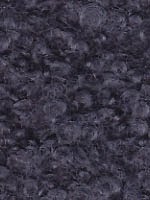
| 
| 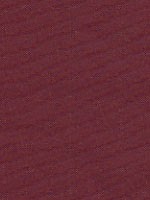
| 
|
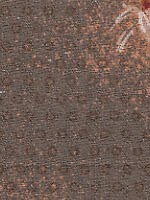
| 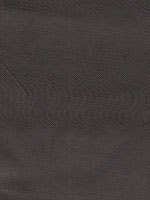
| 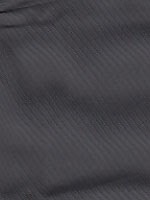
| 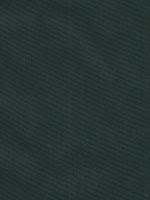
|
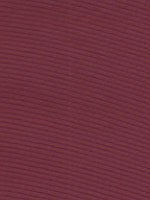
| 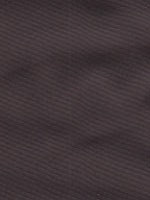
| 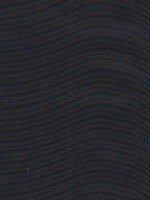
| 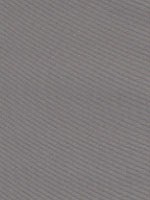
|
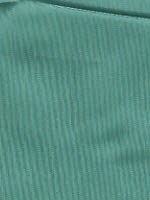
| 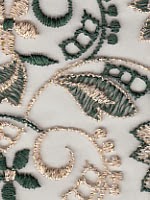 |
Fuzzy wool bouclé knit, Chinese brocade, the lining for the aforementioned bag, wool georgette, wool challis print, eight Bemberg linings, and embroidered organza. With the exception of the bag lining (from Dressew) all of these came from the apparently soon-to-close Gala Fabrics location on South Granville. The total is... uh... in excess of 31 yards. Maybe not quite, since I did use up some of that bag lining, but still, it's a net addition of nearly 30 yards, and there'll be more for December. I need to get going.
2014-12-01
Gala Fabrics Vancouver location closing
I'm disappointed, but given what has to be a very expensive location, I'm not surprised. They are closing in two weeks and have 30-50% markdowns on most of the fabric. Last I heard, whatever is left will end up at the Victoria location. Some things definitely are disappearing, but there's still a varied selection and the store is well stocked — no empty shelves so far.
I've bought a lot; I'll need to update my inventory before I figure out my November fabric turnover, but suffice it to say it's definitely a net positive. I didn't get all that much sewn last month, though I have several projects that are either in progress or that I'm eager to get to. I've just lacked motivation and had other things taking up my time. I hope I'll get back to working faster soon.
I've bought a lot; I'll need to update my inventory before I figure out my November fabric turnover, but suffice it to say it's definitely a net positive. I didn't get all that much sewn last month, though I have several projects that are either in progress or that I'm eager to get to. I've just lacked motivation and had other things taking up my time. I hope I'll get back to working faster soon.
2014-11-28
A little bag progress, and a realization about the topstitching
I've only done a few bits and pieces of sewing lately, but I got the side zipper into the bag, and the pocket bag partly attached.
First one edge of the pocket bag is held onto the lower zipper tape by a double row of topstitching. The wrong side — if there is one — of the pocket bag fabric is up. I tacked it on with whipstitching beforehand, since this was sewn through from the right side where I couldn't keep an eye on it. There is no need to remove the basting, if it doesn't go through to the outside.
I suspect this was done with a twin needle in the original, but I'd have no way to be sure without taking it apart. I did two rows with the single needle, which are not as perfect but will have to do. The thread is Gütermann Mara 30; this is a bit beyond the weight my machine will readily sew, and even if I'd had a large enough double needle, my machine doesn't do all that well with those either.
Then I flipped the pocket bag down. I gave it a quick hand understitch too, to really make sure it doesn't ride up into the zipper pull, though this shouldn't be strictly necessary.
Then the other end of the pocket bag is folded up to meet the top edge of the zipper tape, and the topstitching will be repeated there. Again, I will hand baste it first to avoid any nasty surprises. Finally, the attachment of the straps will catch the sides of the pocket bag.
By the way, this pocket bag is cut all in one piece, with the bottom being a fold. It saves some work, if your cutting layout will allow it.
The fact that the pocket bag can be constructed and attached entirely by the topstitching led me to realize how the handles of the original could have been attached and topstitched in one pass, without the stitching being visible on the inside of the bag.
It turns out the lining was not bagged out at all, in the sense of being sewn on with a hole left for turning. So my proposed construction order was not correct. Instead, the handles must have been attached/topstitched with the top edges of the bag sides already turned under, at least where the handles crossed them. The lining and shell were each assembled completely, their top edges turned under, the lining put into the bag, some parts of the bottom seam allowances were sewn together from the inside so that the lining can't be pulled out, and then finally the turned-under top edges were lined up perfectly and edgestitched together. (I can confirm that the topstitching is all that's holding those top edges together, because I can run my fingernail between them.)
I will try to do the same, because it will be much easier than wrestling a bagged lining around my stiffly interfaced fabric. I will probably add a hand-basting step to make things easier for myself.
On the pocket-less side, I got as far as attaching the handles with edgestitching. I will do the same on the pocket side before deciding what further topstitching to do, but I think it will follow the pattern rather than involving a big X shape as on the original.
The zipper is sewn into a window in the side of the bag, somewhat like (some ways of making) a welt pocket or bound buttonhole, but since the strap will cover the ends, those do not need to be neatly turned under. To avoid bulk there I just cut vertical slashes.
The zipper is overly long because it was the only way I could get one that would match the top zipper as well as meeting other criteria: the color looks reasonable with this fabric, the coil is fairly wide, and the pull is decorative and will hang down vertically, even with the zipper placed horizontally.
First one edge of the pocket bag is held onto the lower zipper tape by a double row of topstitching. The wrong side — if there is one — of the pocket bag fabric is up. I tacked it on with whipstitching beforehand, since this was sewn through from the right side where I couldn't keep an eye on it. There is no need to remove the basting, if it doesn't go through to the outside.
I suspect this was done with a twin needle in the original, but I'd have no way to be sure without taking it apart. I did two rows with the single needle, which are not as perfect but will have to do. The thread is Gütermann Mara 30; this is a bit beyond the weight my machine will readily sew, and even if I'd had a large enough double needle, my machine doesn't do all that well with those either.
Then I flipped the pocket bag down. I gave it a quick hand understitch too, to really make sure it doesn't ride up into the zipper pull, though this shouldn't be strictly necessary.
Then the other end of the pocket bag is folded up to meet the top edge of the zipper tape, and the topstitching will be repeated there. Again, I will hand baste it first to avoid any nasty surprises. Finally, the attachment of the straps will catch the sides of the pocket bag.
By the way, this pocket bag is cut all in one piece, with the bottom being a fold. It saves some work, if your cutting layout will allow it.
The fact that the pocket bag can be constructed and attached entirely by the topstitching led me to realize how the handles of the original could have been attached and topstitched in one pass, without the stitching being visible on the inside of the bag.
It turns out the lining was not bagged out at all, in the sense of being sewn on with a hole left for turning. So my proposed construction order was not correct. Instead, the handles must have been attached/topstitched with the top edges of the bag sides already turned under, at least where the handles crossed them. The lining and shell were each assembled completely, their top edges turned under, the lining put into the bag, some parts of the bottom seam allowances were sewn together from the inside so that the lining can't be pulled out, and then finally the turned-under top edges were lined up perfectly and edgestitched together. (I can confirm that the topstitching is all that's holding those top edges together, because I can run my fingernail between them.)
I will try to do the same, because it will be much easier than wrestling a bagged lining around my stiffly interfaced fabric. I will probably add a hand-basting step to make things easier for myself.
On the pocket-less side, I got as far as attaching the handles with edgestitching. I will do the same on the pocket side before deciding what further topstitching to do, but I think it will follow the pattern rather than involving a big X shape as on the original.
2014-11-23
Bag construction order
This is probably more of a note to self than anything of particular interest to anyone else. But here's how the bag I'm copying might best be constructed:
- Make the outside zipper/pocket assembly. (The zipper is exposed and appears to be topstitched in place.)
- Assemble straps.
- Attach straps to bag sides, leaving the top seam edge of the bag free. So far as I can tell they were topstitched both to the bag and also along the handle portions in a single pass. For the life of me I can't see how this was done without breaking the stitching or having it go through the facing strip on the inside of the bag; there is no doubled stitching and the topstitching definitely seems to be what is holding the straps onto the bag sides. I will take a closer look at this again later on, but if all else fails I will just break the stitching.
- Sew bag sides together.
- Assemble interior pockets and lining, leaving a hole somewhere on the lining side seam.
- Assemble zipper strips (the "lid" of the bag) and zipper tab end; sandwich and apply bag top edge facing.
- Insert lining; turn in; tack down corners; close up hole.
2014-11-21
Knockoff bag progress
After what seemed like endless agonizing on the owl placement, I've cut the two main pieces of the bag. Here's one, fused and ready to go.
I couldn't bear to have partial owl faces that would show on the finished bag, so I cut a jog on one side of each piece, which I will appliqué over the other piece. Here it keeps the yellow owl complete. There are other incomplete ones, like the purple one on the other side, but at least those will go almost entirely into the seam, and the eyes won't show.
The coordinating fabric is shown at left, and I've laid two ends of a strip of herringbone tape on top, more or less where the straps should go. I had considered using the tape alone for the straps, but here it looks much too blindingly pale against the other fabrics, I think.
I had also considered sewing the straps onto the inside of the bag pieces, instead of the outside, where they are on the original bag — that will show more of the owl pattern, but maybe won't bring enough of the contrast fabric in (they will be cut from the contrast, since the herringbone tape looks too light, and besides will probably get noticeably dirty with use).
I do think it is necessary to have the straps continue down this far regardless, since they are part of what holds the side pocket in place on the original. They will also help hold the interfacing to the fabric permanently. I won't do the grommets, though; I haven't found any that I like, or that match the pulls on my zippers. One other thing: I'm cutting each side of the bag in one piece, rather than using the wide contrast band at the top. I probably don't have enough of the contrast to do otherwise, and it was much easier to place the owls this way.
So far I haven't cut anything else out, though I do have all the pieces measured and copied. I will need to decide how best to use my limited amount of contrast fabric.
I couldn't bear to have partial owl faces that would show on the finished bag, so I cut a jog on one side of each piece, which I will appliqué over the other piece. Here it keeps the yellow owl complete. There are other incomplete ones, like the purple one on the other side, but at least those will go almost entirely into the seam, and the eyes won't show.
The coordinating fabric is shown at left, and I've laid two ends of a strip of herringbone tape on top, more or less where the straps should go. I had considered using the tape alone for the straps, but here it looks much too blindingly pale against the other fabrics, I think.
I had also considered sewing the straps onto the inside of the bag pieces, instead of the outside, where they are on the original bag — that will show more of the owl pattern, but maybe won't bring enough of the contrast fabric in (they will be cut from the contrast, since the herringbone tape looks too light, and besides will probably get noticeably dirty with use).
I do think it is necessary to have the straps continue down this far regardless, since they are part of what holds the side pocket in place on the original. They will also help hold the interfacing to the fabric permanently. I won't do the grommets, though; I haven't found any that I like, or that match the pulls on my zippers. One other thing: I'm cutting each side of the bag in one piece, rather than using the wide contrast band at the top. I probably don't have enough of the contrast to do otherwise, and it was much easier to place the owls this way.
So far I haven't cut anything else out, though I do have all the pieces measured and copied. I will need to decide how best to use my limited amount of contrast fabric.
2014-11-18
New Buttericks
The Winter/Holiday collection is out. Overall I like it better than some of the others that came out recently from the Big4. There are some more fitted, semi-casual styles as opposed to a profusion of loose boxy tops and coats, or red-carpet-style eveningwear. Maybe still not much that I personally would have to add to my over-large collection, but here are a few that caught my eye.
6128 is a wrap dress for wovens. It has a waist seam, which would make it much easier to level the skirt and fit the waist regardless of the wearer's posture.
6127 is another woven dress with optional lace contrast and like 6128, could be either eveningwear or work wear. I like how the lace gives the effect of a separate jacket. With both these patterns and coat 6143 they appear to be ticking the applied/contrast lace trend box.
I like the look of blouse 6134 from the front, but really wish they had used princess seams on the back as well; that would have made fitting easier.
I don't really do asymmetry, but there is a lot of it in this collection. Jacket 6140 is a good example. I would probably just look unkempt wearing such a thing, but on the model it looks good in all its different variations. It seems that boiled wool has been suggested for a lot of recent patterns, this one among them. It would be nice if it became more readily available in North America.
6128 is a wrap dress for wovens. It has a waist seam, which would make it much easier to level the skirt and fit the waist regardless of the wearer's posture.
6127 is another woven dress with optional lace contrast and like 6128, could be either eveningwear or work wear. I like how the lace gives the effect of a separate jacket. With both these patterns and coat 6143 they appear to be ticking the applied/contrast lace trend box.
I like the look of blouse 6134 from the front, but really wish they had used princess seams on the back as well; that would have made fitting easier.
I don't really do asymmetry, but there is a lot of it in this collection. Jacket 6140 is a good example. I would probably just look unkempt wearing such a thing, but on the model it looks good in all its different variations. It seems that boiled wool has been suggested for a lot of recent patterns, this one among them. It would be nice if it became more readily available in North America.
2014-11-17
Pressing mitt
I'd forgotten about this for a while, but then found it again among my pressing items.
It's from Simplicity 9076, view I, shown between the pressing ham and the sleeve board (cover). I don't believe the pattern is still in print, but it's probably still to be found on eBay, Etsy and the like.
I believe there are also tutorials for these, though they aren't all constructed and padded in the same way. Some are more like an oven mitt, whereas this is more like a mini-ham with an integrated pocket. Basically, you want a stuffed elongated D shape, with a pocket on one side, big enough to fit most of your hand.
This particular pattern has elastic in the top of the pocket, as well as a hanging loop on the end. I think there was meant to be trim on the top of the pocket too, but I left that off, and generally made the whole thing more serviceable than decorative. Mine is made of cotton drill stuffed with fabric scraps, with the hanging loop in grosgrain ribbon. The fabric stuffing is a bit lumpy, but works quite well as insulation; just make sure it stays between the iron and your hand!
It turns out to be very useful for pressing armscye seams: with the whole garment inside out, hold the mitt through the armscye, pointing into the sleeve cap, with your hand behind the padded area and using the padding to support the cap as you steam. Easier to maneuver than a pressing ham, I think. I don't give the seam a very hard press, just touch it with the iron at most. You can also turn the garment and steam from the outside; there it might be best not to touch the fabric with the iron at all.
It's from Simplicity 9076, view I, shown between the pressing ham and the sleeve board (cover). I don't believe the pattern is still in print, but it's probably still to be found on eBay, Etsy and the like.
I believe there are also tutorials for these, though they aren't all constructed and padded in the same way. Some are more like an oven mitt, whereas this is more like a mini-ham with an integrated pocket. Basically, you want a stuffed elongated D shape, with a pocket on one side, big enough to fit most of your hand.
This particular pattern has elastic in the top of the pocket, as well as a hanging loop on the end. I think there was meant to be trim on the top of the pocket too, but I left that off, and generally made the whole thing more serviceable than decorative. Mine is made of cotton drill stuffed with fabric scraps, with the hanging loop in grosgrain ribbon. The fabric stuffing is a bit lumpy, but works quite well as insulation; just make sure it stays between the iron and your hand!
It turns out to be very useful for pressing armscye seams: with the whole garment inside out, hold the mitt through the armscye, pointing into the sleeve cap, with your hand behind the padded area and using the padding to support the cap as you steam. Easier to maneuver than a pressing ham, I think. I don't give the seam a very hard press, just touch it with the iron at most. You can also turn the garment and steam from the outside; there it might be best not to touch the fabric with the iron at all.
2014-11-15
Kwik-Sew 3473 almost in one piece
Do you track your sewing progress by how many separate pieces your item still has? I do. Right now I have this dress, technically, all in one piece except for the optional bow.
The floppy strip around the neckline is the bias facing. I've made much more bias than was necessary, obviously. I now have that slipstitched to the inside on one half of the front neckline, but that will be slow going. The hems remain to be done, the waist seam needs to be pressed and finished, and the armscye seams need to be finished in some way too. The French seams in the outer skirt might be acceptable enough not to re-do. I did finish the optional bow piece as well (one big bias strip), but it will need to be tied attractively and tacked on, should I decide to use it.
I'm glad I rotated part of the waist dart to the side seam, by the way. It makes for less of a cone shape. The original dart looked rather obtuse and although I didn't try actually cutting and sewing it, I think it might have been a little pointy even in this relatively lightweight, limp fabric.
The floppy strip around the neckline is the bias facing. I've made much more bias than was necessary, obviously. I now have that slipstitched to the inside on one half of the front neckline, but that will be slow going. The hems remain to be done, the waist seam needs to be pressed and finished, and the armscye seams need to be finished in some way too. The French seams in the outer skirt might be acceptable enough not to re-do. I did finish the optional bow piece as well (one big bias strip), but it will need to be tied attractively and tacked on, should I decide to use it.
I'm glad I rotated part of the waist dart to the side seam, by the way. It makes for less of a cone shape. The original dart looked rather obtuse and although I didn't try actually cutting and sewing it, I think it might have been a little pointy even in this relatively lightweight, limp fabric.
2014-11-12
"Wigan" hem
This is one form of interfaced hem I use sometimes. In general, I interface hems to stop them from getting that ripply bedraggled look over time, or having a very sharp crease along the edge that may fade or even fray with wear. Of course, interfacing can change the body and look of the hem, which you may or may not want; the exact result depends on what you use.
"Fusible wigan" is a bias-cut woven fusible interfacing, in this case a bit over 3" wide. I'm told that it's nothing like real wigan, and that you'll be very disappointed if the latter's what you're looking for. In my case, ignorance is bliss. I most likely got this from Greenberg & Hammer years ago. That source is gone, but you might find it elsewhere in the New York area. You can make your own ersatz-ersatz wigan by cutting bias strips of woven fusible interfacing (which is similar to cotton batiste, with the fusing agent detectable as little rough dots).
The 3"+ width is about right for a hem that's around 2" deep; the wigan will extend a bit above the hem, which I find is helpful for preventing any shadow of the cut edge from showing through if it isn't pressed carefully later on. However, if your piece is unlined and the inside will be seen, you will want a narrower width in relation to your hem depth, so it won't show.
This is how I cut and fuse it to a slightly or moderately flared hem.
First I line up my wigan strip about 1/2-5/8" from the cut lower edge.
I apply it in sections, interrupting it at each seam so that it will sit under the opened seam allowances. (This isn't shown above, but you can see it in the last picture.) The one cut end of the wigan should line up under the seam allowance that is on the right of the section/panel you are currently working on, sidling right up to the stitching without going so far as to curl. If that seam has a lot of flare in it, you might have to trim off a little wedge from the wigan to get it to match the shape of the seam.
In the above picture I haven't got the fabric absolutely flat, either. It should really be completely flat by the time you're about to fuse anything, most especially the upper parts of the wigan. Otherwise the drape is liable to become distorted or worse, you might even get folds on the outer fabric. Ideally you should have a nice big flat surface to rest the entire piece on, so there won't be any weight hanging off. If you have to roll up parts of it to fit on the ironing board, do it.
The wigan should be an even distance from the cut edge all around, and flat at the lower edge (but not necessarily the upper, if the piece is at all flared). I interrupt it at seams, by the way; more on that later. Once it's laid out smoothly, and your fabric in the entire hem area is perfectly flat (unlike mine at that upper area), tack-fuse it lightly just along the lower edge. Stop before you get to any seams.
Now cut the wigan along the well of the seam, cutting it just a slight bit scant.
Stick the cut end back under the seam allowance. Brush away any loose wigan lint, since it may have fusing that could crud up your iron. Now you're ready for the final fusing of this section.
Press the wigan on in stages. I find it easiest to shrink out fullness by holding the iron perpendicular to the hem and just lightly brushing upward, before letting the iron rest on the wigan to really fuse it. If your piece is very flared, you may have to cut and lap the wigan to get enough of the extra fullness out.
That's pretty much it. You can run a line of stitching just above the lower edge of the wigan, and again just below the hem foldline, to really hold it on if you want. Then press up your hem and sew it as desired, by hand or machine. But one more thing....
There may be joins in the wigan, like this. I don't like them, because the fusing side comes out to the right side on those seam allowances. That'll get on your iron, fuse to your lining fabric, or cause who knows what other trouble. If you cut your own, don't seam it like this.
Here's how I deal with it: I chop off the seam.
Then place the one side as usual....
... lap the other over it, and lightly tack-fuse to hold everything together while you trim along the seamline to the left.
Put the end under the seam allowance and proceed as before.
You can sew the lapped-together ends of the wigan if you want, before fusing it. That might be a particularly good idea if the splice is farther from a seam, if it won't be covered by lining, if it will be laundered, or if the area will receive a lot of stress. I don't always find it necessary otherwise.
"Fusible wigan" is a bias-cut woven fusible interfacing, in this case a bit over 3" wide. I'm told that it's nothing like real wigan, and that you'll be very disappointed if the latter's what you're looking for. In my case, ignorance is bliss. I most likely got this from Greenberg & Hammer years ago. That source is gone, but you might find it elsewhere in the New York area. You can make your own ersatz-ersatz wigan by cutting bias strips of woven fusible interfacing (which is similar to cotton batiste, with the fusing agent detectable as little rough dots).
The 3"+ width is about right for a hem that's around 2" deep; the wigan will extend a bit above the hem, which I find is helpful for preventing any shadow of the cut edge from showing through if it isn't pressed carefully later on. However, if your piece is unlined and the inside will be seen, you will want a narrower width in relation to your hem depth, so it won't show.
This is how I cut and fuse it to a slightly or moderately flared hem.
First I line up my wigan strip about 1/2-5/8" from the cut lower edge.
I apply it in sections, interrupting it at each seam so that it will sit under the opened seam allowances. (This isn't shown above, but you can see it in the last picture.) The one cut end of the wigan should line up under the seam allowance that is on the right of the section/panel you are currently working on, sidling right up to the stitching without going so far as to curl. If that seam has a lot of flare in it, you might have to trim off a little wedge from the wigan to get it to match the shape of the seam.
In the above picture I haven't got the fabric absolutely flat, either. It should really be completely flat by the time you're about to fuse anything, most especially the upper parts of the wigan. Otherwise the drape is liable to become distorted or worse, you might even get folds on the outer fabric. Ideally you should have a nice big flat surface to rest the entire piece on, so there won't be any weight hanging off. If you have to roll up parts of it to fit on the ironing board, do it.
The wigan should be an even distance from the cut edge all around, and flat at the lower edge (but not necessarily the upper, if the piece is at all flared). I interrupt it at seams, by the way; more on that later. Once it's laid out smoothly, and your fabric in the entire hem area is perfectly flat (unlike mine at that upper area), tack-fuse it lightly just along the lower edge. Stop before you get to any seams.
Now cut the wigan along the well of the seam, cutting it just a slight bit scant.
Stick the cut end back under the seam allowance. Brush away any loose wigan lint, since it may have fusing that could crud up your iron. Now you're ready for the final fusing of this section.
Press the wigan on in stages. I find it easiest to shrink out fullness by holding the iron perpendicular to the hem and just lightly brushing upward, before letting the iron rest on the wigan to really fuse it. If your piece is very flared, you may have to cut and lap the wigan to get enough of the extra fullness out.
That's pretty much it. You can run a line of stitching just above the lower edge of the wigan, and again just below the hem foldline, to really hold it on if you want. Then press up your hem and sew it as desired, by hand or machine. But one more thing....
There may be joins in the wigan, like this. I don't like them, because the fusing side comes out to the right side on those seam allowances. That'll get on your iron, fuse to your lining fabric, or cause who knows what other trouble. If you cut your own, don't seam it like this.
Here's how I deal with it: I chop off the seam.
Then place the one side as usual....
... lap the other over it, and lightly tack-fuse to hold everything together while you trim along the seamline to the left.
Put the end under the seam allowance and proceed as before.
You can sew the lapped-together ends of the wigan if you want, before fusing it. That might be a particularly good idea if the splice is farther from a seam, if it won't be covered by lining, if it will be laundered, or if the area will receive a lot of stress. I don't always find it necessary otherwise.
2014-11-11
Kwik-Sew 3473: bodice underlined
So, the bodice of this dress is all backed and sewn together, and the seam allowances serged. Here it is, albeit not quite in focus.
I'd like to have been able to place the print in less of a near-repetitive way, but it was difficult getting everything cut from of my yardage, especially with the big bias skirt pieces. It could be worse — at least I don't have two round motifs each precisely centered you-know-where.
Here's the plan for the rest:
I'd like to have been able to place the print in less of a near-repetitive way, but it was difficult getting everything cut from of my yardage, especially with the big bias skirt pieces. It could be worse — at least I don't have two round motifs each precisely centered you-know-where.
Here's the plan for the rest:
- The sleeves are unlined and have been French-seamed. They have elbow shaping, which is nice. I have yet to decide exactly what I'll do with the armscye seam allowances.
- I will probably do a bias facing on the neckline, but I may put that off until I put the dress together and see how low it is. It's staystitched so at least the stitching line area shouldn't stretch. Fusing something to it might have been more effective, but that's the problem with not knowing in advance where the neckline is going to end up — I wouldn't want to have to rip the fusible off if I had to change it.
- The two skirt layers are each assembled, the lining with plain seams and the shell with French seams. The latter are not wonderfully well done. I gave them a good steaming, which might or might not be enough of a save. If I think they still look too objectionable, I will redo the second pass of each seam. I also need to decide whether the plain seams on the lining are enough. Because of the (near-)bias cut they don't seem to fray, but this should survive hand washing at least.
- Once all those issues are decided, the layers should be sewn together at the waist and onto the bodice. I am somewhat concerned about bulk here, though the darts are also four layers and don't seem too bad.
- Both skirt layers and the sleeves will have to be hemmed. I will have to decide the relative lengths of shell and lining for the skirt. The whole thing looks quite long at the moment but we'll see.
- The CF may get the optional bow. I have the pieces cut in self fabric; I'll sew it up and see how it looks.
2014-11-10
Some of my favorite sock yarns, and two new to me
I ordered several sock yarns recently. Here is a representative sample:
My goal was to make thick socks to wear with rain boots, and thereby also replace some old L.L. Bean ragg socks that have seen better days. So most of these are heavier than the usual sock weight. (Links below are to Ravelry.)
A few lighter sock yarns I also like:
My goal was to make thick socks to wear with rain boots, and thereby also replace some old L.L. Bean ragg socks that have seen better days. So most of these are heavier than the usual sock weight. (Links below are to Ravelry.)
- Tuffy and Durasport are two different weights of wool/nylon blend from Briggs & Little. I find they are very durable, if a bit scratchy. The main thing that's happened to my Tuffy and Durasport socks over time is the color may fade off the heels and sole, and the stitches may felt together in those areas, along with some non-problematic pilling.
- Perfect is a DK weight wool/nylon from Sandnes Garn. The colors are not as heathered as in Tuffy or Durasport, the texture is smoother, and the weight is between the two. It does seem to pill a little more. I find it's the perfect weight for the patterns in Anna Zilboorg's sock book. (They do also make a nice lighter weight yarn with similar content, Sisu, which I've used and which behaves similarly. But that weight doesn't seem nearly as difficult to find in other brands.)
- I have yet to try Superba Cotton Stretch and confusingly, this company seems to have reused the name for at least two different formulations of the yarn. I was hoping to get the one with both wool and cotton content, but the type I got ended up having no wool.
- Likewise, I have not tried the Aire Valley Aran. I'm not sure this is specifically meant as a sock yarn, but it is 75/25 wool/nylon.
A few lighter sock yarns I also like:
- Patons Kroy Socks is a little thicker than some sock yarns, is reasonably priced, and I haven't had my Kroy socks develop holes over the past several years.
- The various Regia sock yarns. They come in lots of different colors and space-dyes and again, I haven't had problems. Here is just one set of colorways.
- Applelaine Apple Pie is a thinner handpaint, similar to what seems to be the most popular local sock yarn style in BC.
2014-11-09
Lotsa contests
Over the past week I participated in the PR Sewing Bee, which is modeled on the Great British Sewing Bee. I'm not advancing to the second round, but then I rather pointedly ignored the creativity requirement in favor of making something I could easily and immediately use in my wardrobe. Here that is.
The red boiled wool coat went into the Natural Fibers contest, which you can vote in (middle link below) until the end of today if you like... though I feel somewhat uncomfortable asking for people to vote for me, as I don't feel people should be judged on whether they bother to have a blog. Of course, that ship has sailed.
The Handbag Contest is also on this month, and I've got stash fabric for that, so I figured I might as well join it too.



I've also restarted sewing my rayon print bias dress, which had become a bit of a UFO in the midst of all this. I'm happy to report it fits over my head even with the sleeves basted in, so I don't have to decide how exactly I'd put a zipper in given the layers, sheerness and bias cut. Now I just have to unbaste it all and sew it for real.
The red boiled wool coat went into the Natural Fibers contest, which you can vote in (middle link below) until the end of today if you like... though I feel somewhat uncomfortable asking for people to vote for me, as I don't feel people should be judged on whether they bother to have a blog. Of course, that ship has sailed.
The Handbag Contest is also on this month, and I've got stash fabric for that, so I figured I might as well join it too.



I've also restarted sewing my rayon print bias dress, which had become a bit of a UFO in the midst of all this. I'm happy to report it fits over my head even with the sleeves basted in, so I don't have to decide how exactly I'd put a zipper in given the layers, sheerness and bias cut. Now I just have to unbaste it all and sew it for real.
2014-11-08
Iron trials
I've recently replaced my steam iron... long story.
Until several months ago, I had a Black and Decker Classic F65D.
I had it for years. I'm guessing at least twelve. Someone can fact-check me on that if they know when that exact model number was produced, but in any case, it was a long time. It also got dropped on the floor several times, no thanks to my tippy ironing board, and in the last couple of years that floor was hard (laminate over concrete, I think). I brought it to Germany with me and ran it on a step-down transformer, which seemed to work fine. It was a nice iron: no auto shutoff, and relatively hot, heavy, and steamy, so to speak. But eventually it must have been dropped one too many times, and among other things, it stopped heating. I ended up taking it to the recycling center before I moved, though in some ways I wish I still had it, if only to take apart.
Once that iron started becoming iffy, I bought a Severin 3256, or something very like it, at Kaufland. It cost me €15 at most, and was also a decent iron. No auto shutoff, rarely if ever had any problems with dripping, had a self-clean option, etc. All around a good iron, especially for the money; the only annoyance was the small water tank. I probably had it around 2 years; I hope it's now continuing to work for someone else. I gave it away before moving since it was, of course, for 230V, and I didn't have a transformer big enough for it, even if I'd wanted to bring one back.
So I got back to North America and made do with my dry irons for a few months.
These are decent irons IMO and this is a doable thing — you can use damp press cloths and spray bottles and such — but I did find it tiresome after a while, especially for ironing new yardage.
So first I tried a Sunbeam iron that I happened to find on sale at London Drugs. And I had two main problems with it. First, it felt a little unstable and top-heavy when set down on its heel. Add that to my rickety ironing board and it did not inspire confidence. I could have mitigated this somewhat by setting up my ironing board in a very stable, out-of-the way place, but I didn't get around to that until later. The second problem was the dealbreaker, though: I could not get it to stop dripping, even on the highest setting, and with the tank half-empty... yes, I did let it heat up properly. I liked how smooth the soleplate was and how much water the tank held, but I couldn't deal with the dripping, so I took it back.
Then I found this T-fal steam station on sale at a pretty good discount. It was nice in several ways. Like any steam station should, it generated lots of hot, pressurized steam that was very effective. Old creases that just would not have come out even with the Black & Decker came out easily with this. The advertised 2-minute startup time was not accurate in my experience; it took more like 5, but that's still none too shabby for one of these things. The tank was huge. The steam was a bit loud, so I didn't really want to use it late at night, but I could have lived with that. The pump to circulate water into the boiler part was also loud; I hear this is variable, with some individual units being louder than others. But the problem with this one was: almost every time that pump turned on, it would start pumping scalding hot water out of the iron, as if it were trying to do some sort of self-clean (which is apparently not an intended feature of this model... and in any case, you would want it to happen when you chose to, not randomly.) As far as I could tell the only way to make it stop was to switch it off, and then of course you'd have to wait 5 minutes for it to declare itself ready again. Out of curiosity I did try holding the iron over a trash can once to see how long it'd go, but I ran out of patience after a few minutes. I wanted it to work, and I gave it several tries to see if it would think better of doing this, but no such luck. It would do this at least once or twice an hour. So I took it back too.
At that point I was seriously considering buying the current model of the Black and Decker Classic, and I probably would have, if it had been sold in any nearby stores. A downside would have been that (as far as I know) it now has auto shutoff; I'm not sure it's even possible to buy a household iron in Canada these days without it. I realize some people like it, but I don't find it necessary, and I feel it just adds more components that can fail.
Instead I ended up settling on a gravity-feed iron, like the ones I used at school, though not the same model or brand name. The specific one I got was determined just by local availability.
So far I'm quite happy with it. It doesn't produce as much steam as a steam station would, but more than any of the others I've mentioned; it heats up nicely, so it doesn't drip; and it's extremely quiet. The main downside, as with any other gravity-feed, is you have to hang the tank from somewhere, so unless you have one of those IV poles, you'd better be pretty sure of where you want to be ironing. I've now rearranged the sewing room with the ironing board in an out-of-the-way corner where it's unlikely to get knocked; I also pile up my free weights on its feet when I'm not using them, which helps a whole lot too... of course if I am using them, then I'm not ironing.
Until several months ago, I had a Black and Decker Classic F65D.
 |
| B&D F65D |
Once that iron started becoming iffy, I bought a Severin 3256, or something very like it, at Kaufland. It cost me €15 at most, and was also a decent iron. No auto shutoff, rarely if ever had any problems with dripping, had a self-clean option, etc. All around a good iron, especially for the money; the only annoyance was the small water tank. I probably had it around 2 years; I hope it's now continuing to work for someone else. I gave it away before moving since it was, of course, for 230V, and I didn't have a transformer big enough for it, even if I'd wanted to bring one back.
So I got back to North America and made do with my dry irons for a few months.
 |
| Old Sunbeam Ironmaster A-9. A lot of these still exist and work, though they may need new cords. The main reason I have both this and the Continental is this one's bigger and heavier. |
So first I tried a Sunbeam iron that I happened to find on sale at London Drugs. And I had two main problems with it. First, it felt a little unstable and top-heavy when set down on its heel. Add that to my rickety ironing board and it did not inspire confidence. I could have mitigated this somewhat by setting up my ironing board in a very stable, out-of-the way place, but I didn't get around to that until later. The second problem was the dealbreaker, though: I could not get it to stop dripping, even on the highest setting, and with the tank half-empty... yes, I did let it heat up properly. I liked how smooth the soleplate was and how much water the tank held, but I couldn't deal with the dripping, so I took it back.
Then I found this T-fal steam station on sale at a pretty good discount. It was nice in several ways. Like any steam station should, it generated lots of hot, pressurized steam that was very effective. Old creases that just would not have come out even with the Black & Decker came out easily with this. The advertised 2-minute startup time was not accurate in my experience; it took more like 5, but that's still none too shabby for one of these things. The tank was huge. The steam was a bit loud, so I didn't really want to use it late at night, but I could have lived with that. The pump to circulate water into the boiler part was also loud; I hear this is variable, with some individual units being louder than others. But the problem with this one was: almost every time that pump turned on, it would start pumping scalding hot water out of the iron, as if it were trying to do some sort of self-clean (which is apparently not an intended feature of this model... and in any case, you would want it to happen when you chose to, not randomly.) As far as I could tell the only way to make it stop was to switch it off, and then of course you'd have to wait 5 minutes for it to declare itself ready again. Out of curiosity I did try holding the iron over a trash can once to see how long it'd go, but I ran out of patience after a few minutes. I wanted it to work, and I gave it several tries to see if it would think better of doing this, but no such luck. It would do this at least once or twice an hour. So I took it back too.
At that point I was seriously considering buying the current model of the Black and Decker Classic, and I probably would have, if it had been sold in any nearby stores. A downside would have been that (as far as I know) it now has auto shutoff; I'm not sure it's even possible to buy a household iron in Canada these days without it. I realize some people like it, but I don't find it necessary, and I feel it just adds more components that can fail.
Instead I ended up settling on a gravity-feed iron, like the ones I used at school, though not the same model or brand name. The specific one I got was determined just by local availability.
 |
| Ace-Hi AH-100G |
Subscribe to:
Posts (Atom)






